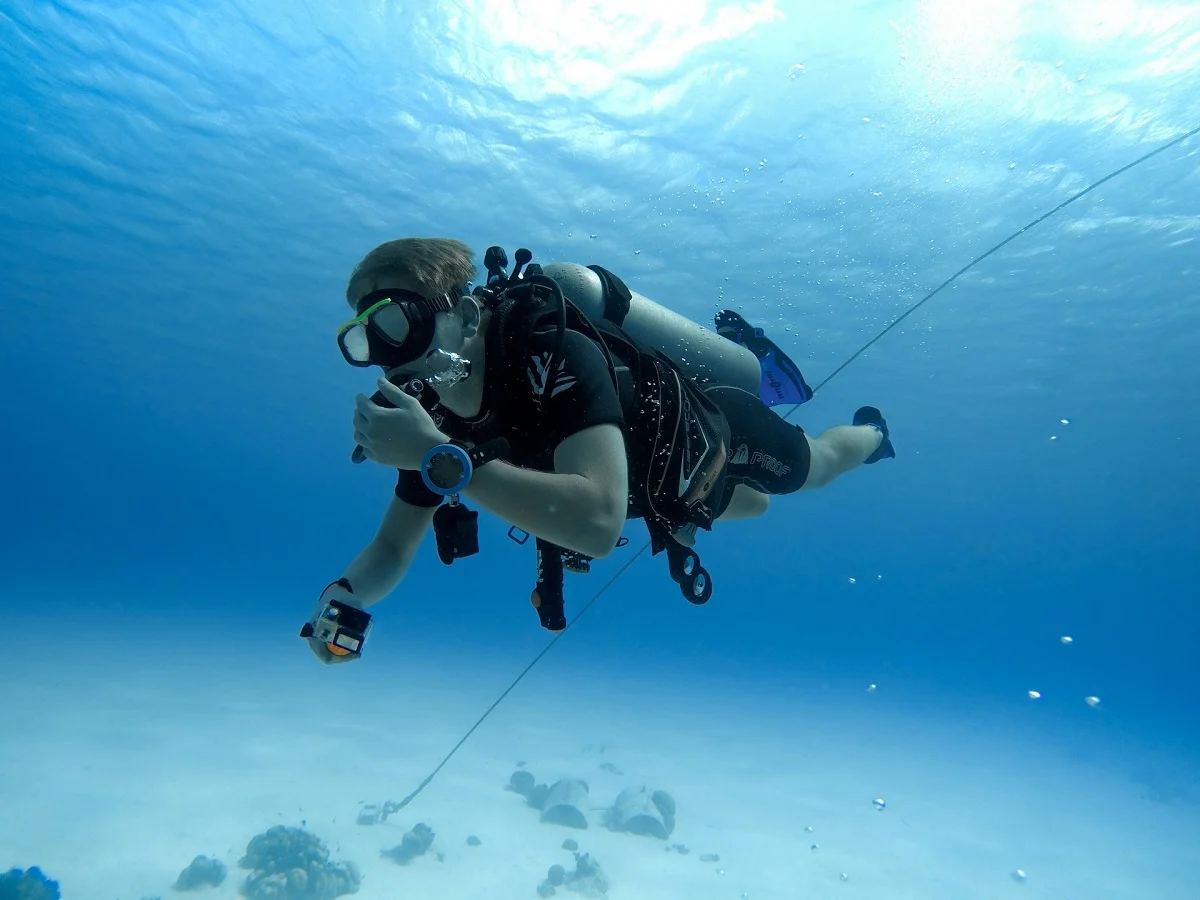Here are five of the most common beginner scuba diving mistakes, what can go wrong, and how to avoid them.
1. Poor Buoyancy Control
The mistake: Sinking too fast or floating too high, often due to over-weighting or lack of breath control.
Why it’s a problem:
Uncontrolled buoyancy can lead to poor trim, reef damage, high air consumption, and even injuries from accidental ascents or descents. It also affects your confidence underwater.
How to improve:
- Master your breathing. With good control, you can adjust your position using just your breath. For example, breathe in to float slightly up over an obstacle; breathe out to descend gently.
- Always do a proper weight check before each dive.
Consider taking a Peak Performance Buoyancy course to fine-tune your skills.

Photo by Jesse van Vliet on Unsplash
2. Not Equalizing Early and Often
The mistake: Descending without clearing your ears—or forcing it when it’s already painful.
Why it’s a problem:
Can lead to barotrauma, ear pain, or even ruptured eardrums—cutting your dive short or risking long-term damage.
How to improve:
- Start equalizing before your descent.
- Equalize gently and frequently—before discomfort starts. Never push through pain.
- Descend slowly and feet-first if needed.
If equalization feels difficult, ascend slightly and try again. If the issue persists, it’s safer to abort the dive.
3. Over-Kicking and Using Arms
The mistake: Kicking constantly, swimming with your hands, or flailing unnecessarily.
Why it’s a problem:
It wastes energy and air, stirs up sediment, and reduces control. Plus, it often scares away marine life.
How to improve:
- Use slow, controlled fin kicks. Every unnecessary movement burns energy and air.
- Keep your arms—and your gear—tucked in.
Practice proper trim and horizontal positioning. Being horizontal reduces drag (resistance in the water), making you more efficient.
4. Skipping Gear Checks
The mistake: Relying entirely on your buddy or dive guide to check your equipment.
Why it’s a problem:
Missed issues like tangled hoses or low air can lead to panic or dangerous situations underwater.
How to improve:
- Always do your own pre-dive check.
- Use the BWRAF system: BCD, Weights, Releases, Air, Final check.
Get familiar with your setup—especially if you’re using rental gear.
Did you know?
There are fun ways to remember BWRAF. Try using a phrase like “Bruce Willis Ruins All Films” (no offense, Bruce—you’re just helping us stay safe!).
👉 Read more about buddy check in Buddy System Explained!
5. Ascending Too Quickly
The mistake: Rushing to the surface without monitoring your speed or making a safety stop.
Why it’s a problem:
This increases your risk of decompression sickness or lung overexpansion—two of the most serious diving injuries.
How to improve:
- Ascend no faster than 18 meters (60 feet) per minute.
- Always do a 3-minute safety stop at 5 meters (15 feet).
Monitor your dive computer or depth gauge carefully during ascent.
Did you know?
A slow, controlled ascent gives nitrogen time to safely leave your body and protects your lungs and tissues.
Final advice
Now you’re familiar with top 5 mistakes beginner scuba divers make. Mistakes are part of learning—but staying informed and practicing good habits makes your dive journey safer and more enjoyable. With time and awareness, you’ll dive with more confidence and control.
Happy diving—and remember: confidence comes with bubbles, not with rushing.
POST credits
Main image: Photo by Mitchel Wijt on Unsplash

